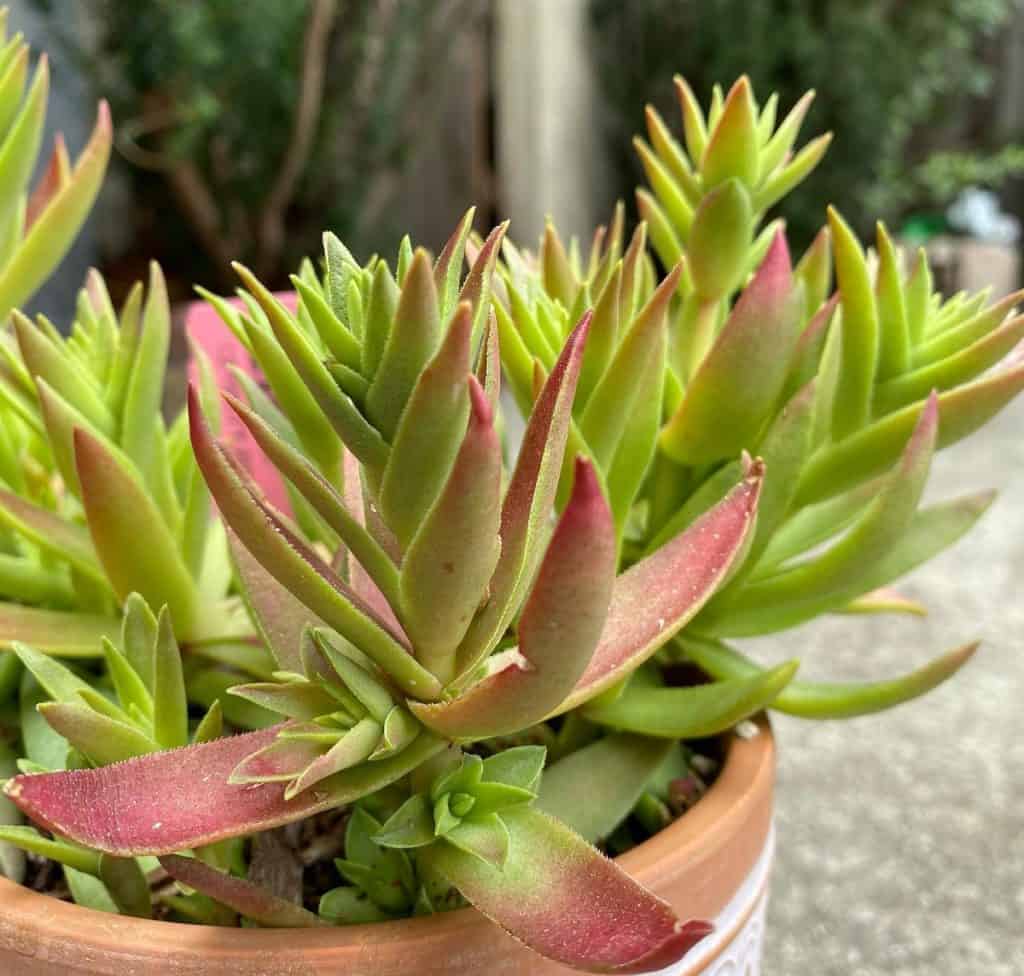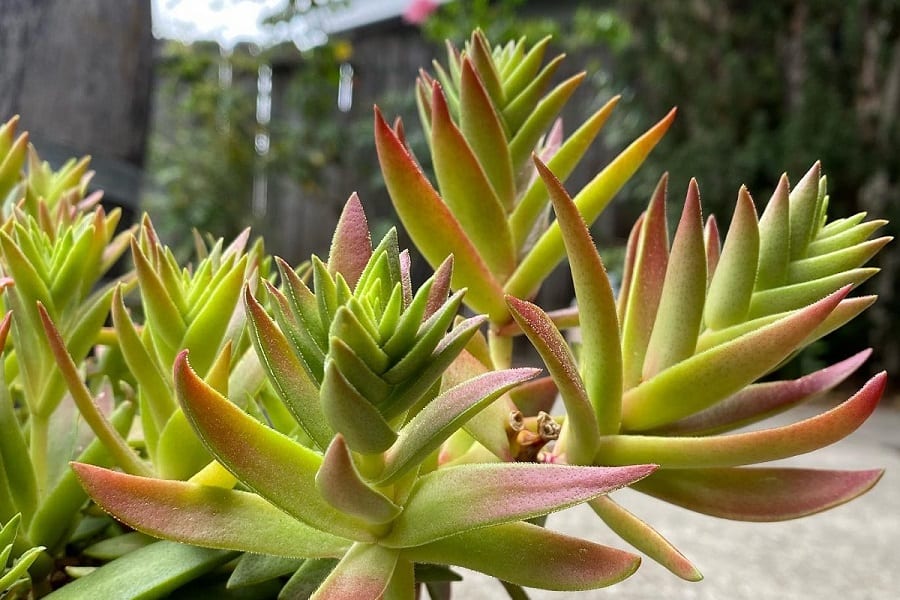Crassula Sharks Tooth: Characteristics and Care
Looking to add some trendy, low-maintenance greens to your home decor? Meet the Crassula Sharks Tooth – a funky little succulent that’s taking the houseplant world by storm! With its layered triangular leaves and ability to turn vibrant red, it’s an eye-catching pick that’s surprisingly easy to care for. Keep reading to learn all about this must-have indoor garden gem.

Contents
About Crassula Sharks Tooth
Originally from South Africa, the uniquely named Crassula Sharks Tooth (sometimes called Red Pagoda) belongs to the Crassulaceae or stonecrop family. While it can also thrive outdoors in some climates, it’s become a popular indoor houseplant thanks to its petite size and striking looks.
The small, thick, triangular-shaped leaves spiral around the central stem in a stacked pattern. The leaves start out green but develop a bright red hue when exposed to lots of sunlight and just the right amount of water. Pretty cool, right?
Related Post:
40+ Types of Crassula Succulents
Care Tips for Crassula Sharks Tooth
Light
These little succulents love lots of bright light! Place yours on a sunny windowsill where it can bask in direct sunlight. If you don’t get enough natural sun, use a grow light set up about 6-12 inches away to ensure it gets the rays it craves.
Watering
Like most succulents, the Crassula has humble water needs. Soak the soil thoroughly, but then allow it to fully dry out before watering again. During the spring and summer growing season (April-September), water every 2-3 weeks. In fall and winter when growth slows, cut back to watering once every 4-6 weeks.
Soil
A well-draining potting mix made for cacti and succulents is perfect. Or make your own by mixing in ingredients like pine bark or coconut coir to increase drainage.

Fertilizing
Don’t go overboard – too many nutrients lead to stretchy growth. Use a balanced liquid fertilizer diluted by half, and only feed every 2 weeks in spring and summer.
Temperature
This trendy plant does best in warm, 65-75°F (18-24°C) temps year-round. Aim to keep it above 50°F (10°C) in winter.
Pests and Diseases
The Crassula Sharks Tooth is a pretty tough plant, but watch out for sap-sucking pests like mealybugs, aphids or scale that may show up sometimes. Look for cottony masses or sticky residue and treat with an insecticidal soap or neem oil spray.

Propagating Crassula Sharks Tooth
One of the best things about these little succulents? You can easily grow more from just a single leaf or stem cutting! Here’s how to multiply your Sharks Tooth collection:
Leaf Propagation
- Gently twist or snip off a plump, healthy leaf
- Allow it to form a callus for 2-3 days before replanting
- Place the calloused leaf on well-draining cactus/succulent soil
- Water whenever the soil is completely dry
Stem Cutting Propagation
- Use a sharp, clean tool to snip off a 2-3 inch stem segment
- Allow the cutting to callous for 2-3 days
- Plant the calloused cutting in a 2-3 inch pot filled with half peat moss and half sand
- Set in a bright spot and water when the soil is completely dry
Offset Division
- When the mother plant produces a basal offset, use a clean knife to divide it off
- Allow the offset to form a callous for 2-3 days
- Replant the calloused offset in well-draining cactus/succulent soil
- Water whenever the soil fully dries out
Whether you decide to multiply from leaves, cuttings or offsets, patience is key! These slow-growers take their sweet time establishing new roots. But stick with it, and you’ll have an endless supply of Sharks Tooth beauties in no time.
